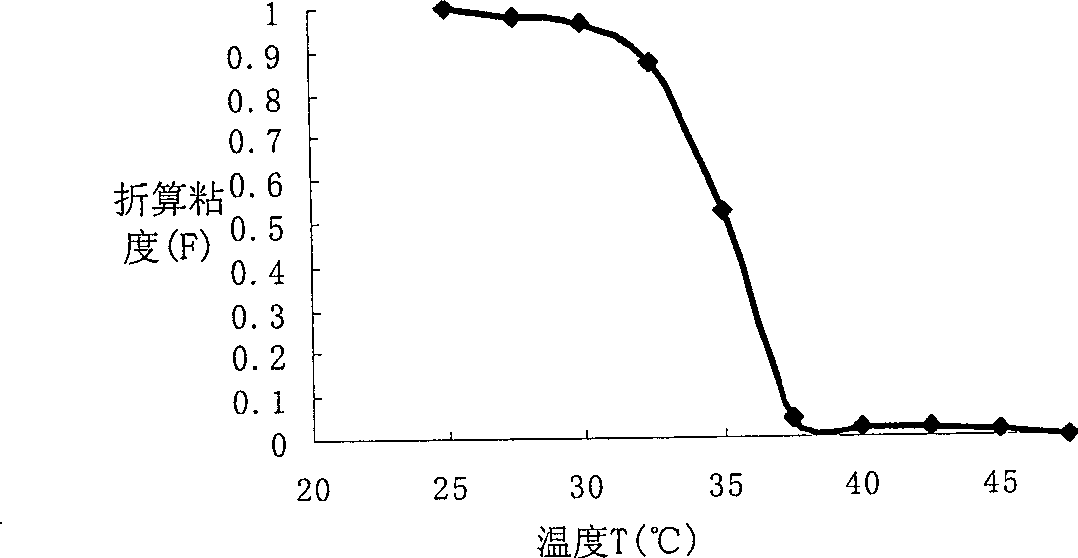Method of extracting undenatured natural collagen from tanning waste leather offcut
A technology of natural collagen and scraps, applied in the field of extracting undenatured natural collagen, can solve the problems of low added value and no biological activity, and achieve the effect of unique biocompatibility, low biodegradability and broad application prospects
- Summary
- Abstract
- Description
- Claims
- Application Information
AI Technical Summary
Problems solved by technology
Method used
Image
Examples
Embodiment 1
[0027] Example 1: Take the tanned skin residue of pork slices, mince them, wash them three times with warm water at 30-35° C., take 100 g of debris, and add 2 g of fatty acid polyoxyethylene ether and 3 g of alkylphenol polyoxyethylene ether. The solution was soaked for 3 hours at a temperature of 32°C. After filtration, 10 g of isopropanol was added and shaken at room temperature for 24 hours, and then filtered. Adjust the pH to 2 with acid, add 2 g of pepsin, and stir for 24 hours at a temperature of 4-6°C. Remove the filter residue by centrifugation, add 0.7M NaCl to the supernatant for salting out, dissolve the precipitate with 0.5M acetic acid, repeat the salting out once, and then process through membrane dialysis to obtain a 5% undenatured natural pigskin collagen solution of about 600g.
Embodiment 2
[0028]Example 2: Take the tanned skin residue of pig slices, mince it, wash it 3 times with warm water at 30-35°C, take 100g of debris, and put it into a mixture made of 10g of fatty acid polyoxyethylene ether and 5g of alkylphenol polyoxyethylene ether. soaked in the solution for 24 hours at a temperature of 34° C., after filtering, add 50 g of acetone and shake at room temperature for 48 hours, and filter. Adjust the pH to 4 with acid, add 5 g of 537 protease, and stir for 48 hours at a temperature of 4-6°C. Remove the filter residue by centrifugation, add 2.1M NaCl to the supernatant for salting out, dissolve the precipitate with 1.0M acetic acid, repeat the salting out for 3 times, and then process through membrane dialysis to obtain an undenatured natural pigskin collagen solution with a concentration of about 8%. 600g.
PUM
 Login to View More
Login to View More Abstract
Description
Claims
Application Information
 Login to View More
Login to View More - R&D
- Intellectual Property
- Life Sciences
- Materials
- Tech Scout
- Unparalleled Data Quality
- Higher Quality Content
- 60% Fewer Hallucinations
Browse by: Latest US Patents, China's latest patents, Technical Efficacy Thesaurus, Application Domain, Technology Topic, Popular Technical Reports.
© 2025 PatSnap. All rights reserved.Legal|Privacy policy|Modern Slavery Act Transparency Statement|Sitemap|About US| Contact US: help@patsnap.com


